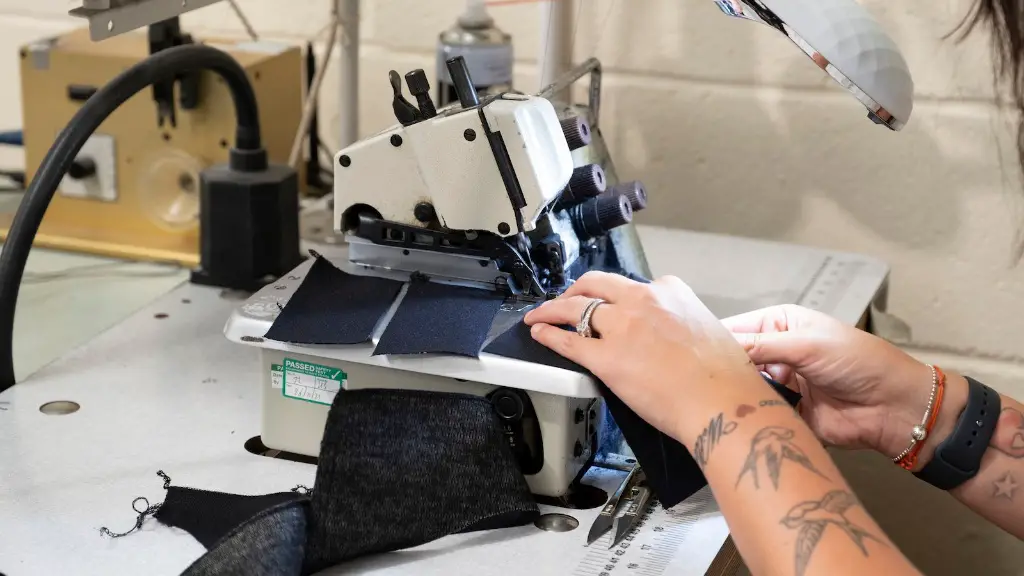Whether you are a professional seamstress or an amateur sewer, one big frustration is a sewing machine that skips stitches. Fortunately, most of the time this problem can be resolved very quickly with some troubleshooting strategies.
In the simplest terms, a sewing machine ‘skips’ a stitch when small ‘loops’ of thread accumulate in the bobbin area. As the machine hits these loops, the needle cannot get through and the thread then cannot form a stitch. The skipped stitch means that the seam won’t be secure, which can be a nightmare if you’re taking on a bigger project.
Causes of Skipped Stitches
The most common cause of skipped stitches is poor tension or incorrect thread settings. If the settings are too tight, the thread won’t move freely, and if the tension is too low, the thread won’t be prompted to grab hold of the fabric and stitch correctly. Experienced sewers recommend double checking the tension every 10 minutes while working on a project – if adjustments need to be made, it’s better to spot it quickly and make the changes so more serious mishaps can be avoided.
Additionally, if the wrong needles are used or the needles are faulty, this can disrupt the needle’s ability to move through the fabric and produce a loose stitch, which will eventually pull apart. If a needle is not suitable, old or blunt, it’s best to replace with a new one.
Sometimes the problem can be too much oil on the machinery, which will also cause problems as oil affects the tension mechanism, as does an overlocking thread, as this is thicker than usual and can disrupt the tension mechanism.
Solving the Problem
The first step in resolving this issue is to check the machine for any thread, dirt or dust build up, as these can cause skipped stitches. A good way to get rid of this is to remove the circular plate from the sewing area and use brush or a vacuum to get rid of any debris. As a general rule, it’s always a good idea to keep the area around the machine clean as much as possible.
Next, check the thread and settings – if the settings aren’t right, the machine will struggle to stitch, so check the manual or do some research on the ideal settings for the type of fabric being used.
If the settings are ok and the needle is also correct, the problem may just be a build-up of tension. To reduce this and get the machine stitching properly again, adjust the tension by turning the tension knob. Many machines have a ‘tension release’ feature which helps to reduce the tension and is useful if the machine is ‘locked’ in the right position. If this doesn’t work, tighten the tension but be sure to check it again in 10 minutes to ensure it isn’t too tight.
Once the tension has been adjusted, check the needle again – it should move freely and not cause any disruption.
Checking the Bobbin
If the problem is still not solved, it’s time to focus on the bobbin area of the machine. If thread loops are collecting in the bobbin or it seems to be out of alignment, it’s best to stop the machine and check it for any thread or buildup. If there is any remnants of thread or dirt, remove it carefully with a small brush.
Once all the debris has been removed, check the bobbin is correctly aligned, as many machines have adjustable settings for different fabric types.
Finally, it’s worth checking that the machine is lubricated correctly – a few drops of oil in the right places should do the trick.
Inspecting the presser foot and Harness
It’s also important to check the presser foot, as this can also cause issues with skipped stitched. If the presser foot is too tight, it will stop the fabric from moving freely and could cause skipped stitches.
Similarly, if the harness is clogged with dust and thread, this too will cause disruption. Cleaning the harness with a brush and some lubrication is usually enough to solve the problem.
Investing in Quality Parts
For experienced sewers, the main take away from this article should be the importance of investing in quality parts and avoiding the temptation to buy generic or cheap parts. Lower-quality parts are more likely to be faulty, which can cause skipped stitches.
Investing in quality needles, thread and other associated parts is important for avoiding this problem. Buying good quality will last longer and help the machine to create neat, consistent stitches that make the finished product look professional and high quality.
Tools and Maintenance Tips
Every sewer should also have a few essential tools to hand such as a sewing machine oil, some small brushes and a lint roller. These tools are useful for keeping a machine free from dust and thread and can also be handy when it comes to making more straightforward adjustments and repairs.
It’s also extremely important to read the maintenance manual beforehand – even if the task is seemingly straightforward. Doing a bit of research beforehand can help to avoid any major mistakes or problems that can arise.
Patience and Persistence
Finally, on top of all of these technical skills, the most important fix to sewing machine skipping stitches is simply patience and persistence. It’s not always easy to get a machine to work perfectly, and there may be a few frustrating moments along the way, but eventually the problem is usually resolved.




